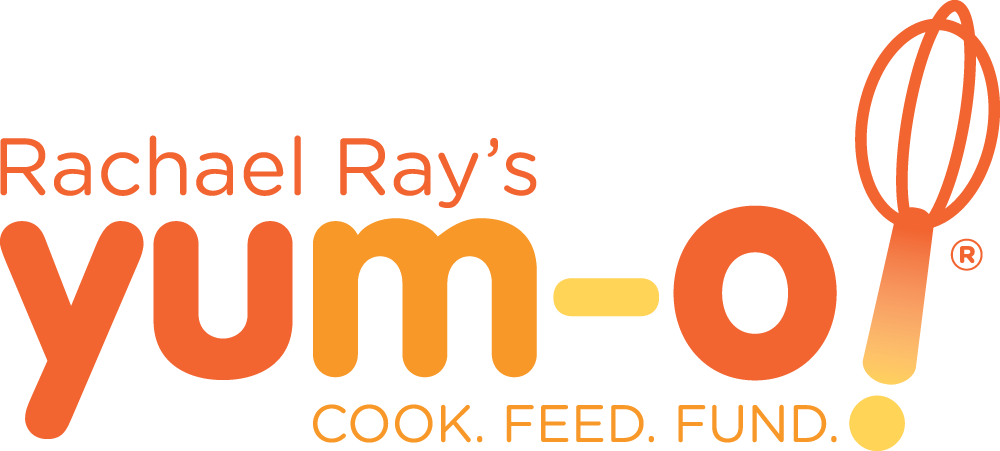Let’s Get Cooking…with Rebecca Currie
We often hear that healthy food costs more than junk food. Rebecca Currie decided to put this idea to the test by living on a food budget of just $1 a day for one month! The result? She discovered that with careful planning and some creativity, not only could she stretch a buck a long way, but she enjoyed some truly tasty meals. Yum-o! asked Rebecca for some tips and ideas to translate her experience into daily life with kids and families.
How did you decide to do the $1 a day challenge?
I read about some other people who had done it and saw what they ate – I wanted to see if I could have better meals and be less hungry than they were. I also thought I might be able to give people some ideas about how to eat better for less.
Were you hungry much? Did you find yourself eating lots of pasta and rice?
I tried to make sure that all the food I ate was very filling. I ate things like beans and rice and cabbage that are high fiber and have a high water content, so even though they don’t have very many calories, you can have a big plateful for not very much money, and it feels like you’re eating a lot.
I did eat pasta or rice almost every day on the project. You can eat pasta and rice in all kinds of different ways, so even though you’re eating the same thing, you won’t get tired of it because it feels different every time you eat it.
With pasta, you can have it Italian-style with tomato sauce or olive oil, or Asian-style stir fried with vegetables, or Vietnamese-style in soup ("pho"). With rice, you can have it like they do in Latin American and the Caribbean with beans and salsa, or with stir-fried vegetables like they do in Asia.
What was your favorite, inexpensive meal?
My favorite meal on the project was suggested to me by a friend who lived in Japan for a number of years. She saw that I had pasta noodles and cabbage, and she suggested that I make a stir fry dish called "yakisoba." My version was pretty simple (I didn’t make any kind of sauce for it), but it still tasted good.
It had stir fried cabbage and carrots and onion. While the vegetables were frying, I boiled some water and cooked pasta noodles, then added those to the vegetables and stir-fried them all together. At the end, I added a little bit of chopped fresh jalapeños to make it a little spicy. It tasted really good!
How do you think a family of four can apply your same idea to their lifestyle? In other words, can they do it for $10 a day? $5?
Eating for a dollar was definitely pretty hard, but there are lots of things people can do to eat for less, and I had lots of interesting comments on my blog from people who got new ideas from my project. One thing you can see from my project is that if you buy basic ingredients – chicken legs, dried beans, rice, cabbage, oranges – most of those things are pretty cheap. So buying basic things and cooking them yourself instead of buying already-prepared foods is one good way to save money.
Also, I ate some meat, but not very much. If you change the focus of your meals a little bit, with meat as more of a side item rather than the main ingredient, you can save money that way and then spend some of what you save on fruits and vegetables. That would be healthier in two ways – they’d be eating less meat and more vegetables – and it would also be cheaper.
One thing that I bought on the project that I use all the time in my regular life is frozen spinach. Frozen vegetables are usually much cheaper than fresh vegetables, and they’re just as nutritious. You can keep them in the freezer for a long time and not have to worry about them going bad. So frozen vegetables are a good idea for anyone trying to save money and eat healthier.
Also, you can try things like oatmeal or cooked rice for breakfast instead of processed cereal. You can make muffins, using whole grain flours and not too much sugar, and it doesn’t take too much time and it makes a good breakfast.
I think there are a lot of little things like that that people can do that will make a big difference and save them money. Mostly eating more basic foods, less processed or prepared items, and less meat, those are the big things.
What tips do you have for people who are super busy and don’t have much time to shop and cook? How do you avoid takeout or fast food?
Cooking can take more time than eating out, but it doesn’t have to. I usually try to make simple things that aren’t too much work, and I make the same kinds of things regularly so I don’t have to think too much about them.
One thing I like to do sometimes is have "breakfast" for dinner – I’ll make a nice omelet with tomatoes and cheese or ham and mushrooms, or scrambled eggs with spinach and mushrooms and cheese. Those are really quick and easy, you can make them in just a few minutes and they taste good and are filling. And some fruit with it and it’s a good meal and not too expensive.
I try to store things in the freezer in portions that I can use later – my freezer has things like chicken stock that I froze in muffin tins, and tomato paste that I froze in tablespoon-sized packets, and quarter-cup packets of sautéed mushrooms. Because I freeze things like that, it means I have a lot of things on hand that I can use when I need them, and because they’re in small sizes, they thaw quickly. So I can usually make something out of what I have in my pantry or freezer, and that saves me from having to go to the store or thinking too much about what I’m going to do.
I also like to have things like soup in single-size servings and bagels in the freezer, so I can pull them out and have a good meal that’s even faster than fast food.
So some of it is just to think through things when you have a little bit of time – think about what kinds of things you can make easily and what your family will eat, and what you can make ahead of time and keep in the freezer so you’ll have something even if you’re really busy.
What are some other ways to apply frugality to every day living?
The main thing you can do is just to be aware of what you’re spending money on and think about whether that’s worth it to you. A lot of times people do things out of habit without thinking about how much it really costs. If you take some time to really look at it, you might realize you could do something different – like bringing your own water bottle and filling it from a drinking fountain instead of buying bottled water.
It’s usually better to not try to change too many things at once because that’s hard and you’ll probably feel deprived, like you had to give up all these things you care about. It usually works better if you try to make changes a little at a time.
You can do that with anything – take small steps to do things cheaper or use a little less, a little less, then a little less than that. When you feel like you really miss it, go back up just a little bit. Usually you’re just as happy with less as you were when you used a lot, and you can use the money you saved for something else that’s more important to you.
To keep up with Rebecca Currie, check out her blog, Less is Enough!

